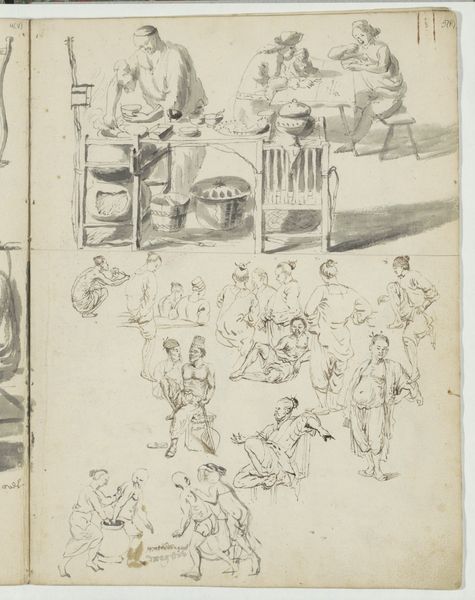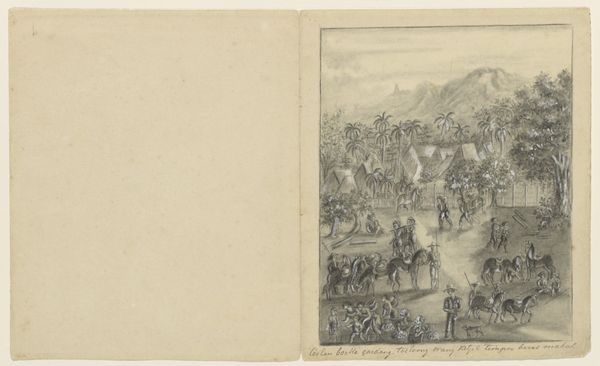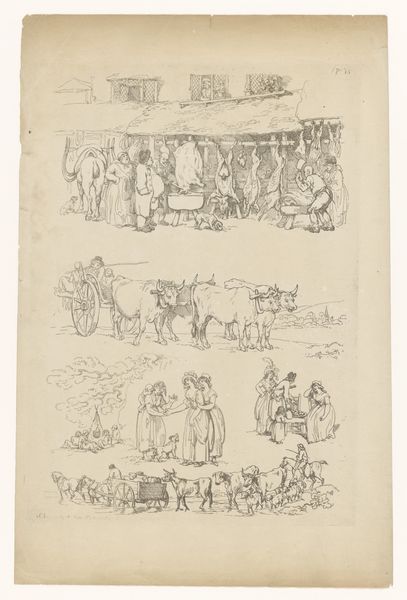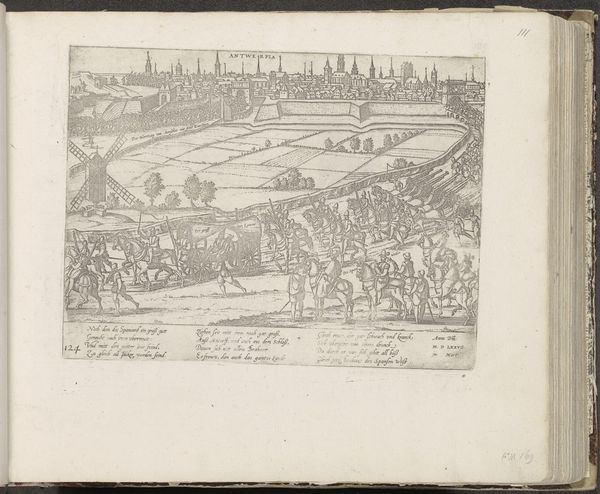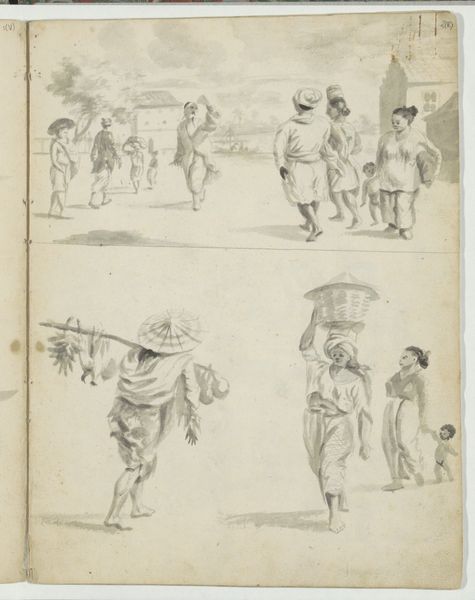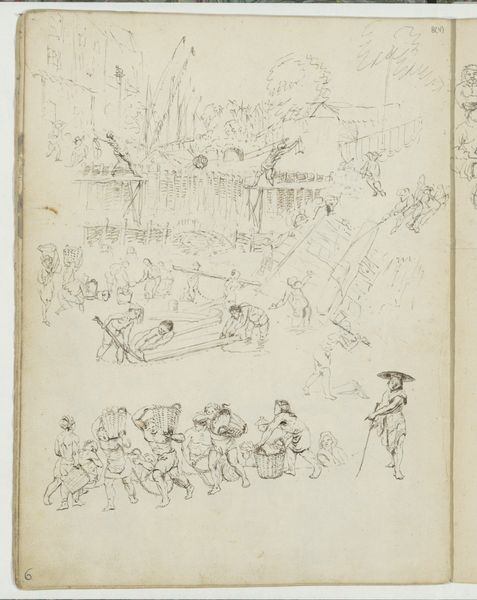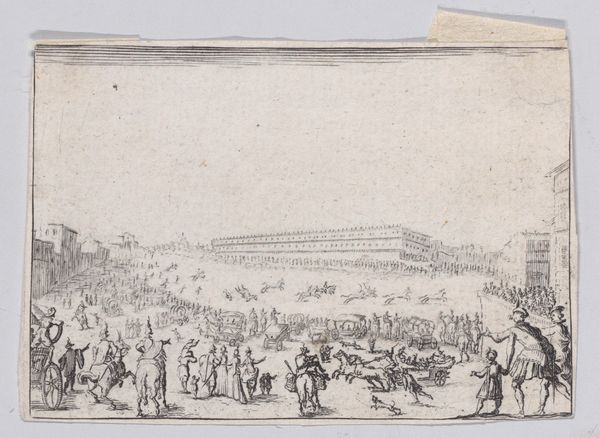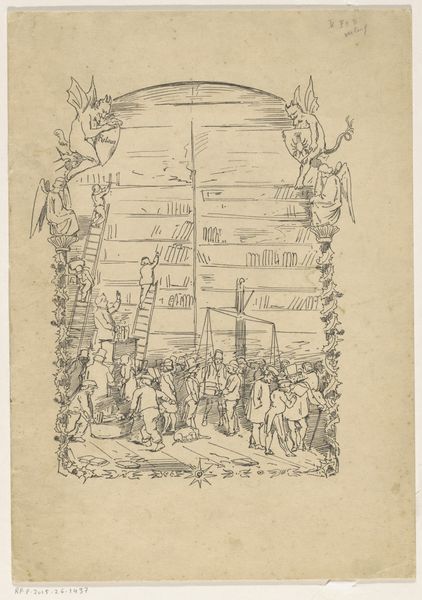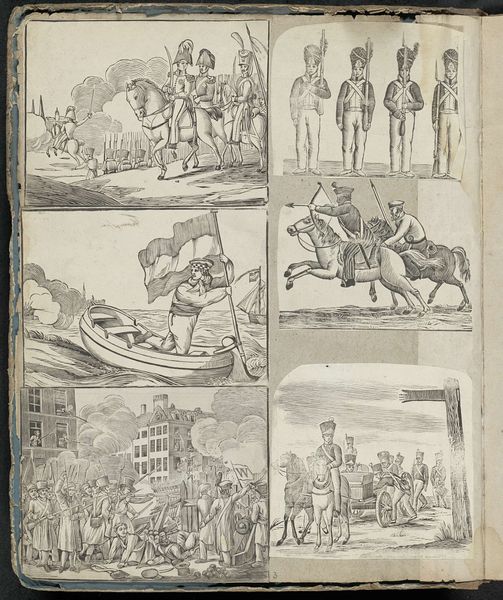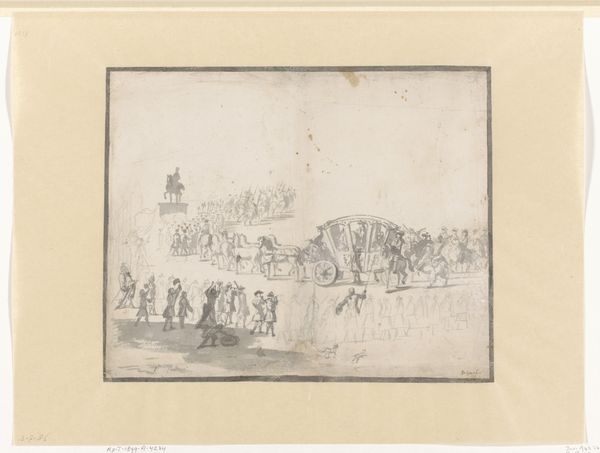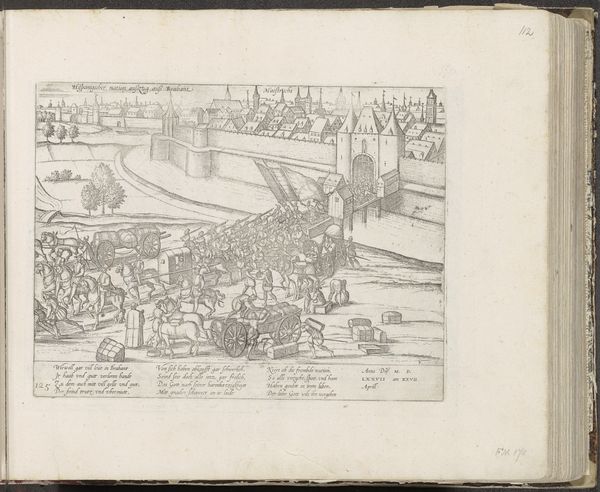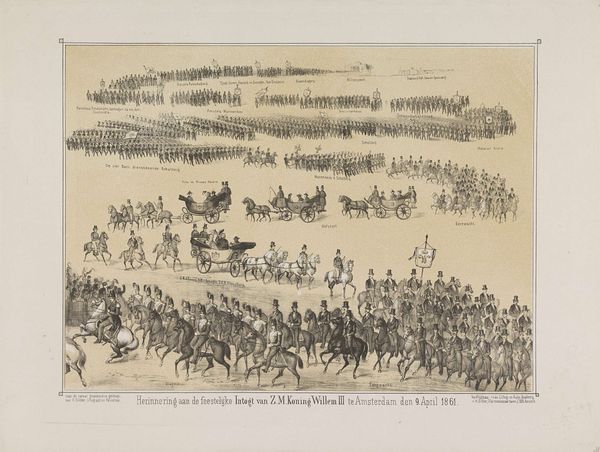
drawing, paper, ink
#
portrait
#
drawing
#
dutch-golden-age
#
pen sketch
#
asian-art
#
sketch book
#
paper
#
personal sketchbook
#
ink
#
sketchwork
#
ink drawing experimentation
#
pen-ink sketch
#
pen work
#
sketchbook drawing
#
genre-painting
#
storyboard and sketchbook work
#
sketchbook art
Dimensions: height 295 mm, width 232 mm
Copyright: Rijks Museum: Open Domain
Curator: Wouter Schouten’s ink drawing from around 1664, titled "Ambonese en Javaanse parades en een Maleier bruiloft" roughly translates to Ambonese and Javanese parades and a Malay Wedding. It feels like peeking into a fascinating storybook. What do you make of it? Editor: It immediately strikes me as a series of snapshots capturing colonial encounters. The contrast in rendering—the detailed processions versus the more generalized depictions of people—hints at the power dynamics at play. Curator: It's interesting you point that out. To me, there's an almost dreamlike quality to how these scenes flow into each other on paper, separated yet connected. The quick, flowing lines give it a feeling of immediacy. Almost like sketches of someone scribbling down their memory of a big festive event. Editor: Indeed, but those “festive” events should not be viewed divorced from the violence of Dutch colonialism in the East Indies. Cultural events were often manipulated, reshaped, even invented by colonial authorities for display and control. How does that history inform your reading? Curator: Absolutely, it casts a different light, doesn't it? Makes me think about the performative aspects for the colonial gaze. It’s this collision of curiosity and control, observed through Schouten’s eyes, that makes it feel both alluring and unsettling. I guess it is hard not to wonder if it's possible to fairly and ethically represent cultures from a different worldview and background? Editor: Exactly. We have to remember that perspective shapes perception, and that the colonial lens was, by definition, distorting. Consider who had the power to commission and circulate images like these, and to what ends. Curator: It brings up so many complicated feelings about our responsibilities when engaging with such a loaded depiction! Like, how can one view the picture as a snapshot of culture and an insight of different people marrying or celebrating versus accepting its possible colonial biases? Editor: I'm left thinking about the silences within this image. What's absent or marginalized tells us as much as what's visible. Who isn’t being represented fairly in these wedding parades? Curator: Mmh, maybe we need to question and rethink our interpretation when coming across such artworks, by seeking to understand the broader historical and social narrative surrounding them? Editor: Precisely. It’s in the asking that we get closer to something like the truth of these moments. Thank you for that, your take today was absolutely amazing!
Comments
No comments
Be the first to comment and join the conversation on the ultimate creative platform.
